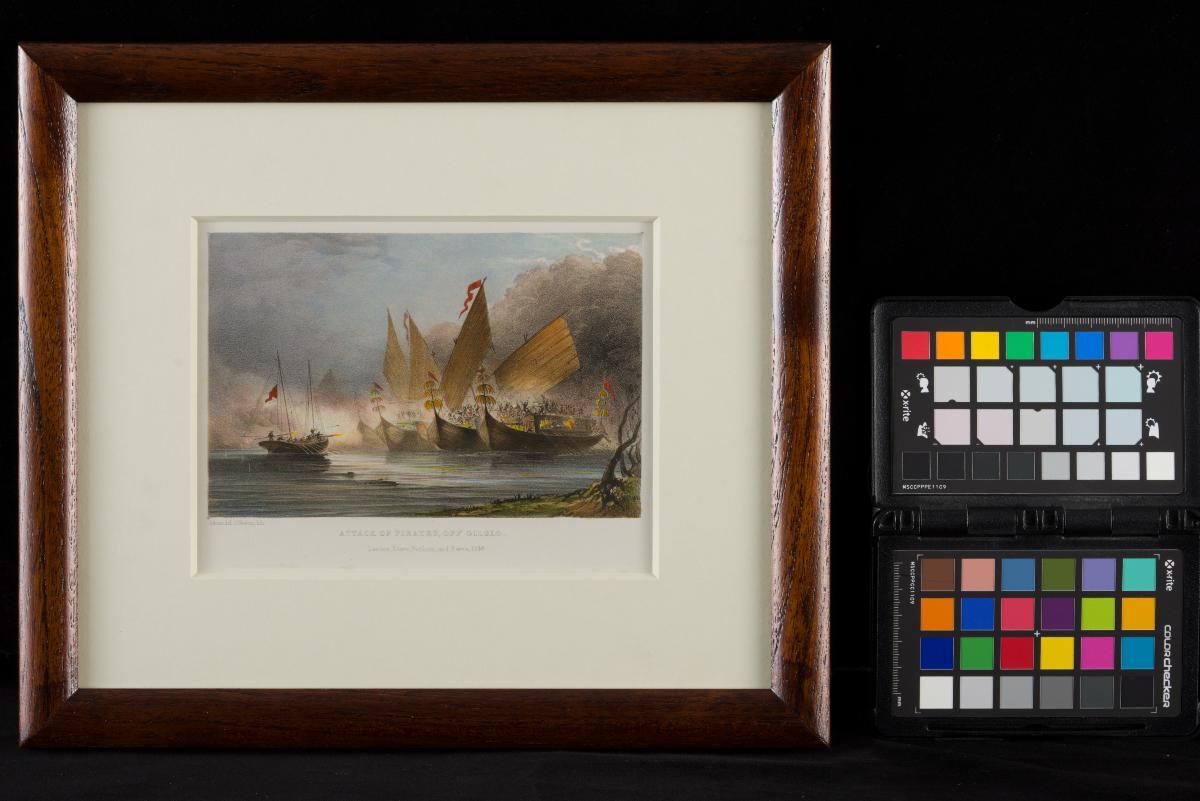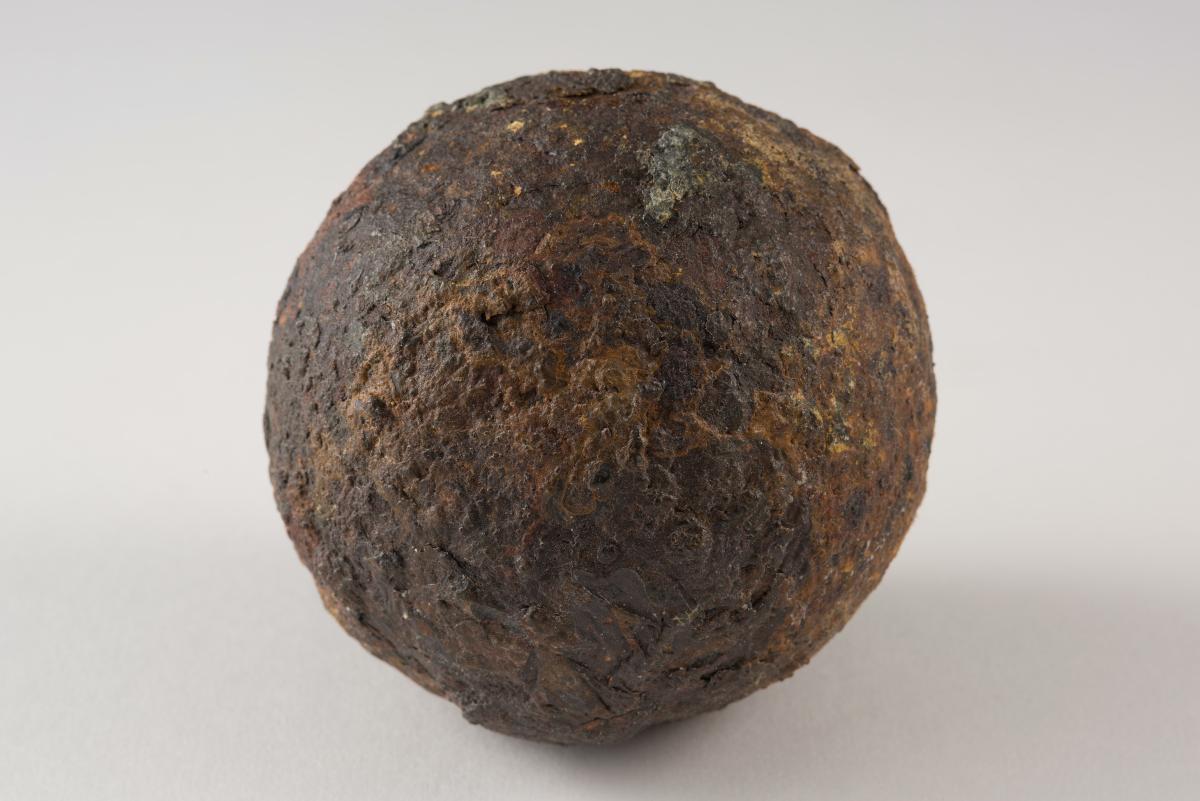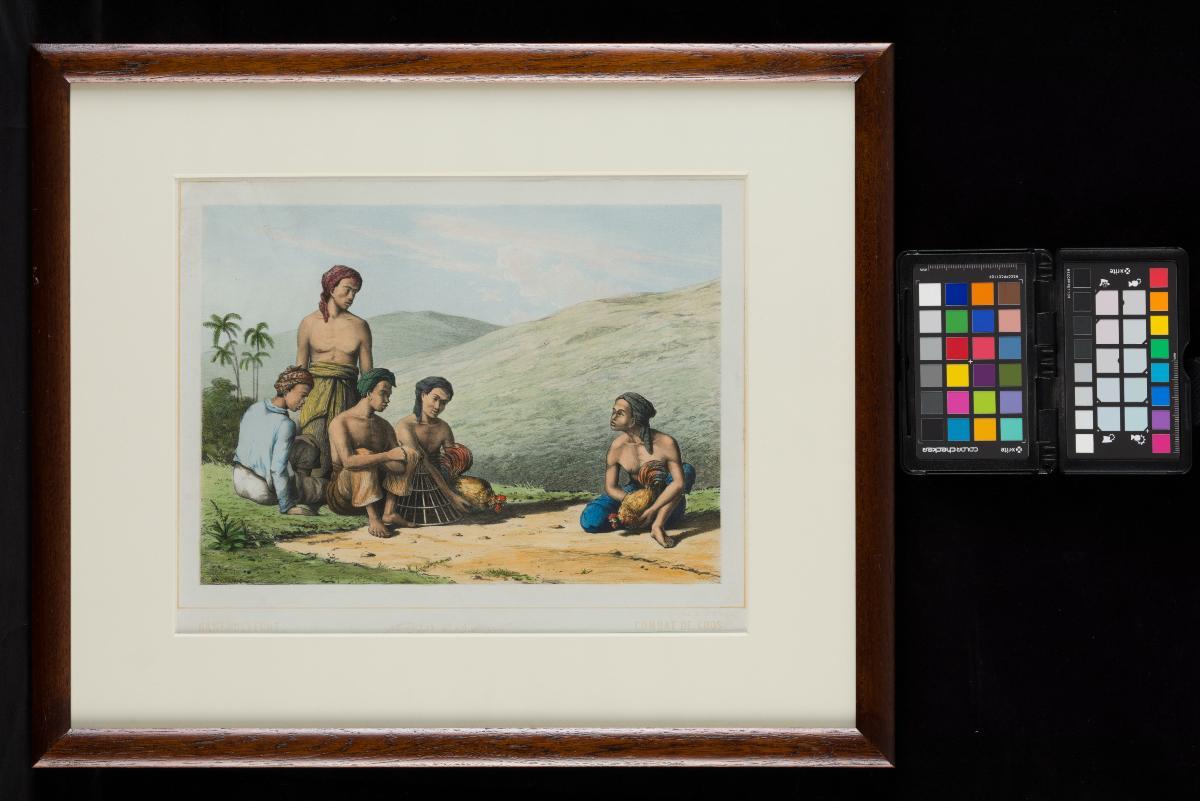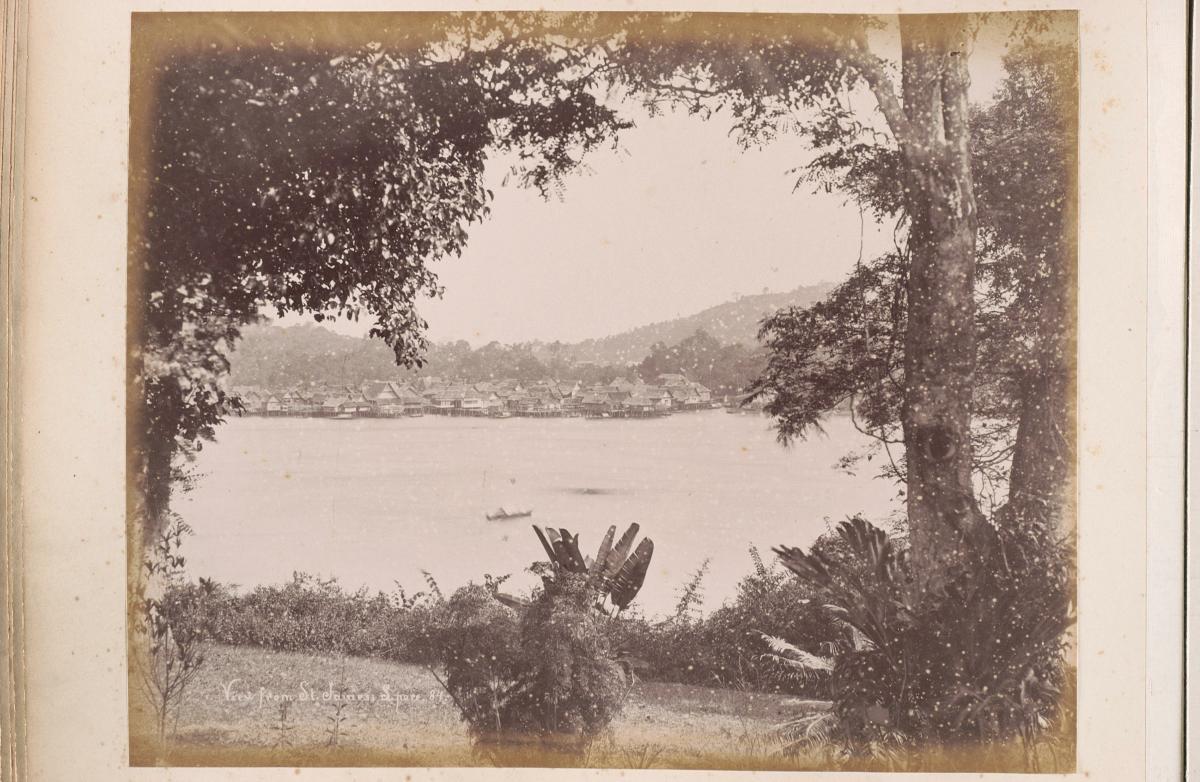The scene depicts a battle between large pirate boats and a small, probably British boat on an anti-piracy expedition off Gilolo, one of the islands in the Moluccas. The artist has taken some liberty in depicting the size of the pirate boats, perhaps in an effort to paint the British anti-piracy campaign in a heroic light by having a small gunboat engaging larger pirate vessels. Numerous anti-piracy expeditions were carried out by the British and the Dutch throughout the 19th century in an effort to stamp out raids on merchant vessels carried out by tribes of sea nomads known as Orang Laut. These raids, which were deemed legitimate acts under Malay customary law when carried out on behalf of local rulers, were considered illegal by the Europeans and dismissed as mere barbarous acts of piracy. Such ‘pirate’ activities surged in the mid 19th century and spanned the Straits of Malacca in the west to the Moluccas in the east. Besides the Orang Laut, the Iranun from the Sulu Archipelago were another prominent tribe that engaged in sea raids, often setting out in large fleets around May each year with the southwest monsoon and reaching the Malay Peninsula in August, which marked the start of the three-month long ‘pirate season’. Besides employing military force to curb raiding activities, the British and Dutch also relied on a system of alliances with Malay rulers as well as treaties that delineated maritime boundaries. Despite such efforts, piracy still occurs in Southeast Asian waters to this very day, albeit in a more limited form when compared to the heyday of piracy in the region.















